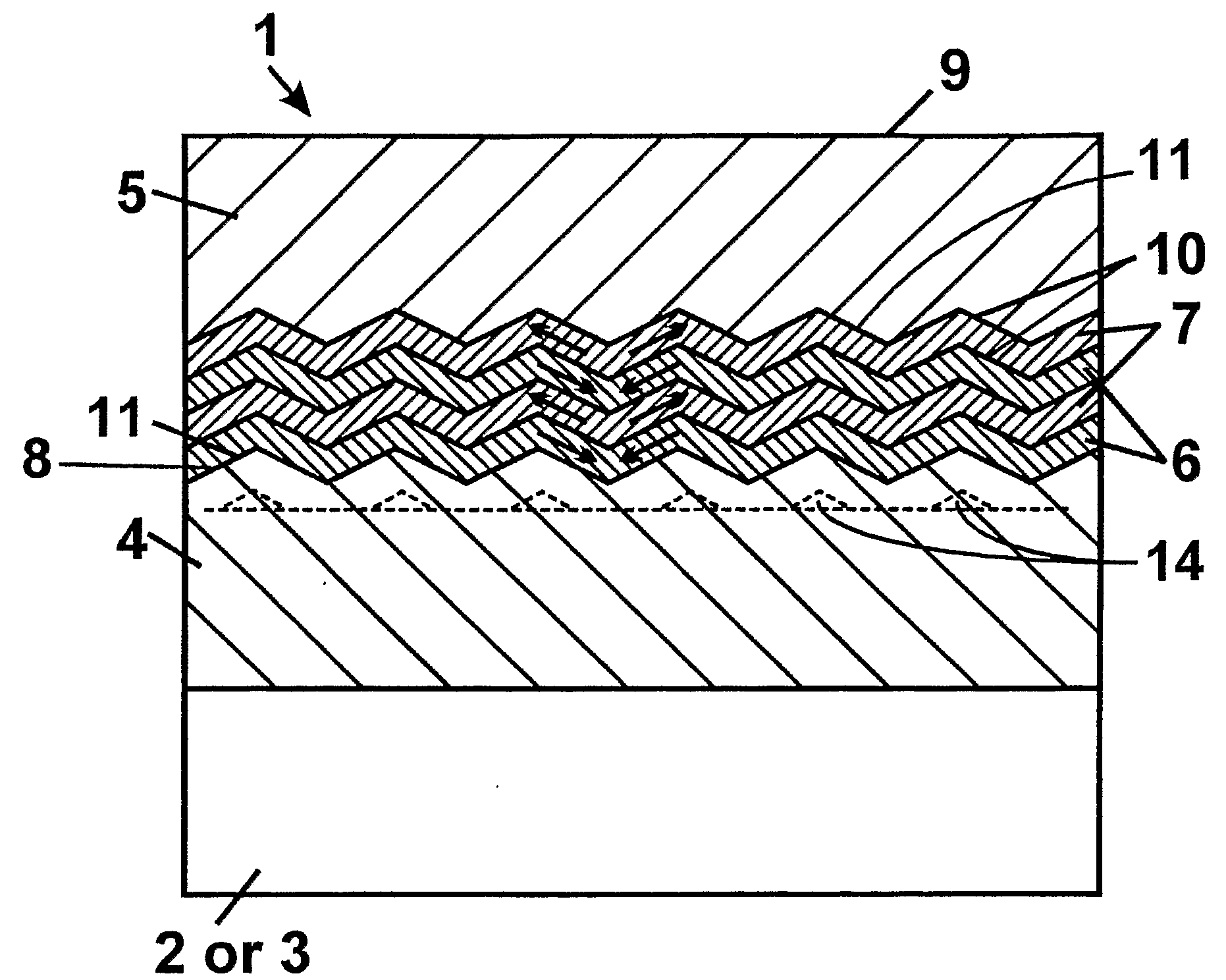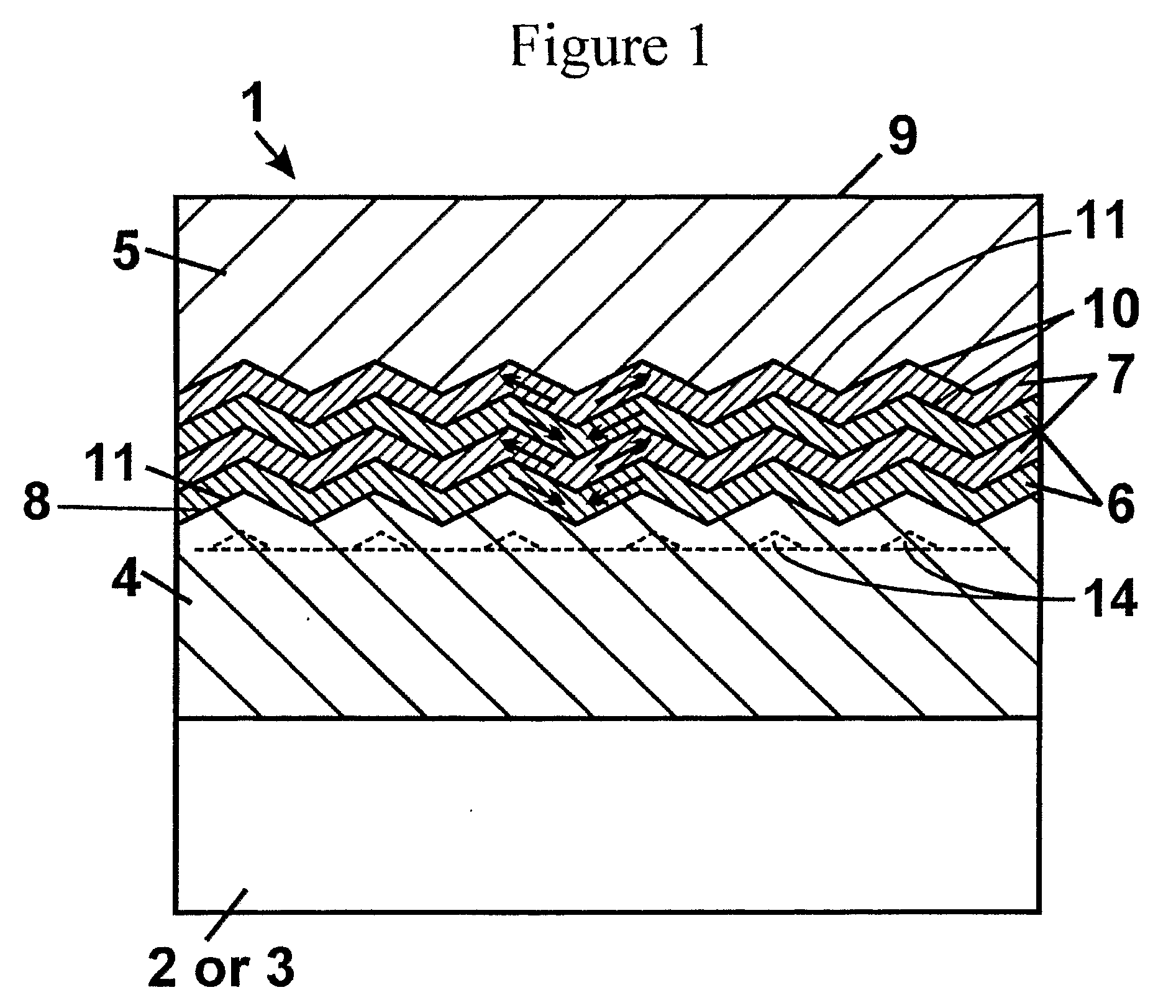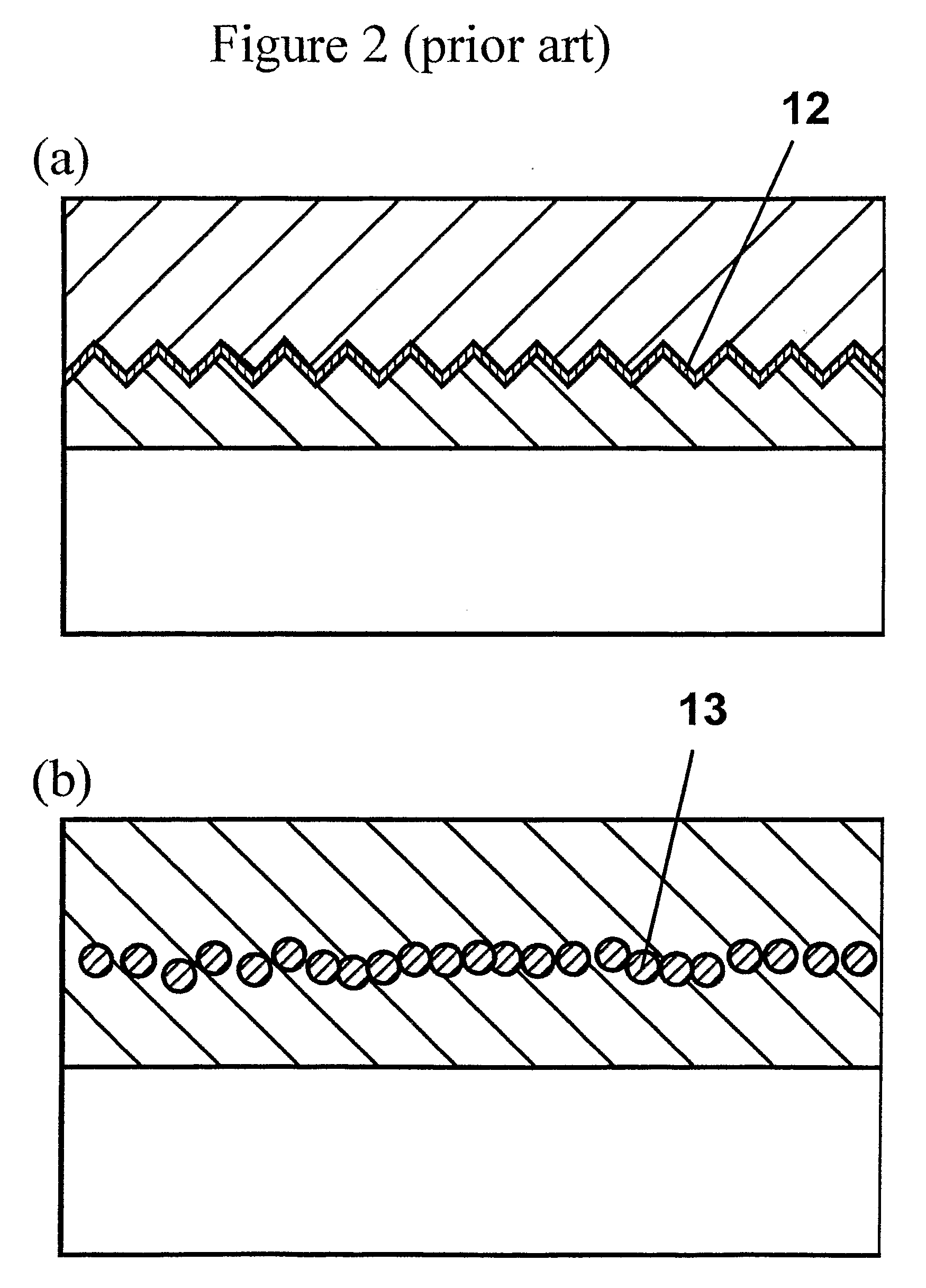Semiconductor Structure and Method of Manufacturing a Semiconductor Structure
a semiconductor and semiconductor technology, applied in the field of semiconductor structure, can solve problems such as strain-induced dislocations in the structure formation, and achieve the effects of low diffusion region thickness, effective light diffusion capability, and convenient processing
- Summary
- Abstract
- Description
- Claims
- Application Information
AI Technical Summary
Benefits of technology
Problems solved by technology
Method used
Image
Examples
Embodiment Construction
[0027]Reference will now be made in detail to the embodiments and examples relating to the present invention, which are illustrated in the accompanying figures.
[0028]The semiconductor structure 1 of FIG. 1 comprises a substrate 2 formed of the semiconductor structure materials or substrate 3 formed of foreign materials, a bottom cladding layer 4 with a surface 8 having facets 11 with crystallographic indexes other than (0001) and those of the type {1 100}, a top cladding layer 5 with flat surface 9, and a diffusion region consisting of two pairs of first diffusion layer 6 and second diffusion layer 7. Dashed line shows the precipitates 14 grown during the growing of the bottom cladding layer. The top cladding layer has a lattice constant equal to that of the bottom cladding layer. The diffusion layers have refractive indices different from those of the cladding layers. In addition, the refractive index of the first diffusion layers 6 is different from that of the second diffusion la...
PUM
 Login to View More
Login to View More Abstract
Description
Claims
Application Information
 Login to View More
Login to View More - R&D
- Intellectual Property
- Life Sciences
- Materials
- Tech Scout
- Unparalleled Data Quality
- Higher Quality Content
- 60% Fewer Hallucinations
Browse by: Latest US Patents, China's latest patents, Technical Efficacy Thesaurus, Application Domain, Technology Topic, Popular Technical Reports.
© 2025 PatSnap. All rights reserved.Legal|Privacy policy|Modern Slavery Act Transparency Statement|Sitemap|About US| Contact US: help@patsnap.com



